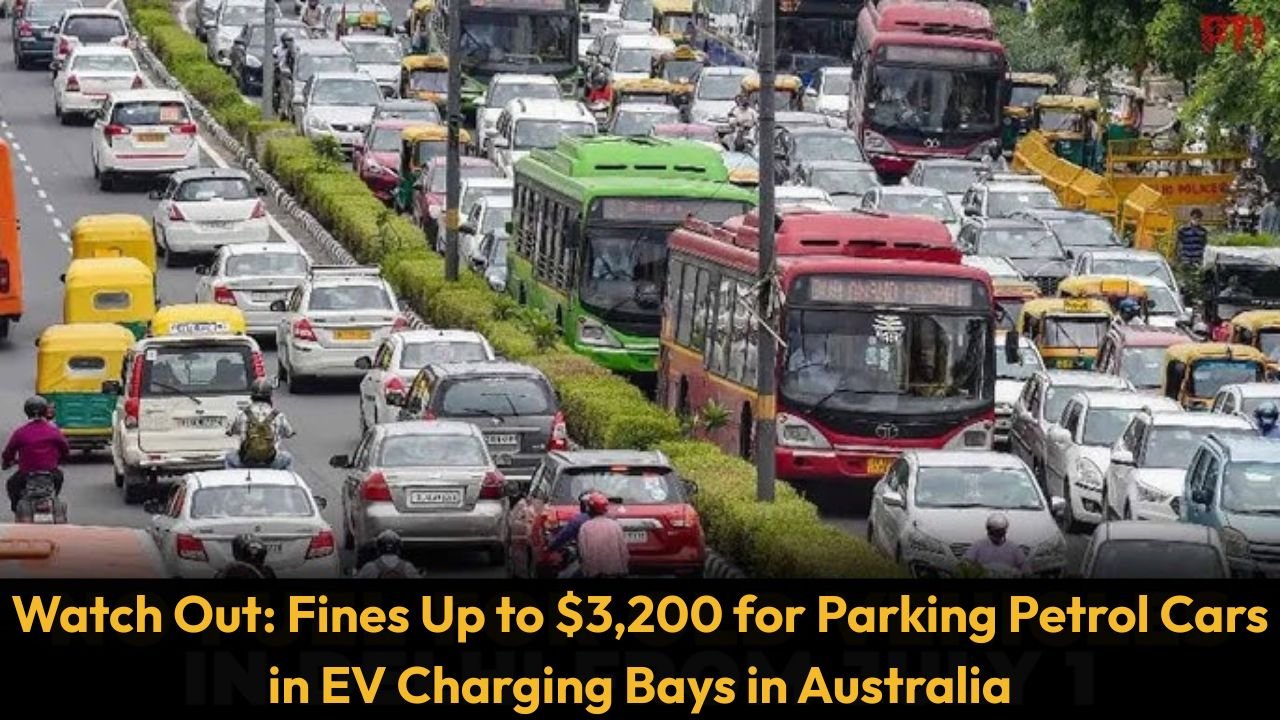As electric vehicles (EVs) gain traction across Australia, new rules are cracking down on drivers who park non-EVs in charging bays. Known as “ICEing,” this can lead to fines as high as $3,200 in some areas. With EV infrastructure expanding, these penalties ensure fair access for electric car owners. Here’s what every driver needs to know to avoid a costly mistake in 2025.
Why Are These Fines So High?
Australia’s push for greener transport means more EV charging stations, but they’re in high demand. Petrol or diesel vehicles blocking these spots—called ICEing (Internal Combustion Engine-ing)—prevent EVs from charging. Strict fines discourage this, ensuring chargers are free for those who need them. It also promotes faster turnover, so more EV drivers can use limited bays. 1 5
These rules align with state laws prioritizing sustainable transport. Clear signage at stations helps spread awareness.
How Much Are the Fines by State?
Fines vary across Australia, reflecting local traffic laws. The Australian Capital Territory (ACT) hits hardest, with penalties up to $3,200. Other states aren’t far behind. Here’s a breakdown:
| State/Territory | Maximum Fine for ICEing |
|---|---|
| Australian Capital Territory | $3,200 |
| Queensland | $2,875 |
| New South Wales | $2,200 |
| Victoria | $370 |
| South Australia | $250 |
| Western Australia | $100 |
| Tasmania | $63 |
| Northern Territory | $63 |
Note: Fines can depend on whether you’re actively charging or just parked. Check local signs for specifics. 1 5
Who Gets Fined for ICEing?
Anyone parking a non-EV in a marked EV charging bay risks a fine, whether they’re idling or fully parked. EV drivers can also face penalties for overstaying after charging finishes. Enforcement comes via parking inspectors or cameras, backed by state road laws. For example, Queensland’s rules explicitly ban non-charging vehicles in designated spots. 5
Why This Matters for Drivers and Communities
These rules support Australia’s shift to EVs, cutting emissions and easing charger access. Blocking bays frustrates EV owners and slows adoption of cleaner transport. Communities benefit from reduced congestion at stations, especially in urban hubs like Sydney or Melbourne. Public education campaigns and signage are rolling out to clarify expectations.
Tips to Avoid a Fine
It’s simple: don’t park in EV bays unless you’re charging an electric vehicle. For EV owners, move your car once charging is done—lingering can cost you. Look for clear signs marking EV zones, often with green paint or symbols. Petrol drivers, stick to regular parking spots to stay penalty-free. If unsure, check local council websites for rules. 1
What’s Next for EV Infrastructure?
Australia plans to expand charging networks, with thousands of new stations by 2030. As EVs grow—over 180,000 on roads in 2025—so do enforcement efforts. Some states are exploring demerit points alongside fines for repeat offenders. Stay updated via transport authority sites to avoid surprises. 5
Final Thoughts
Fines up to $3,200 for ICEing show Australia’s serious about EV adoption. Whether you drive a petrol car or an EV, respect charging bays to keep things fair. Check signs, move promptly, and stay informed to dodge penalties and support greener roads.
FAQ
What is the fine for parking a petrol car in an EV charging bay?
Fines range from $63 (NT, Tasmania) to $3,200 (ACT), depending on the state.
Can EV drivers get fined for staying in charging bays?
Yes, if they overstay after charging, they risk fines in some states.
Why are these fines enforced?
To ensure EV charging bays are available for electric vehicles, supporting cleaner transport.
How can I avoid an ICEing fine?
Don’t park non-EVs in charging bays; EVs should move once charging is complete.
Where can I check local EV parking rules?
Visit your state’s transport authority or council website for specific regulations.




